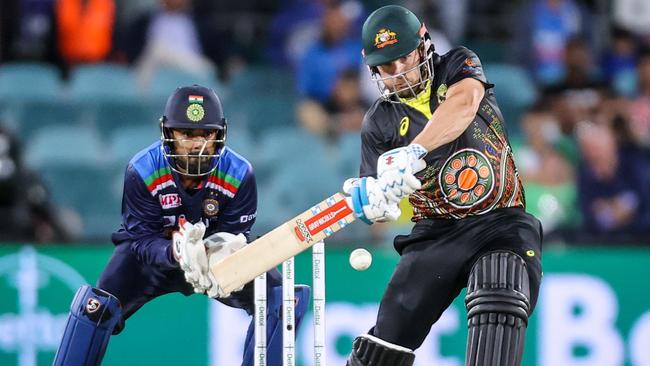In defence of the humble cricket journalist
Covid has already given us a taste of the journalist-free cricket landscape but is this the print media’s future, basically transcribing television?

It’s an enticing prospect. Australia hasn’t been to the Caribbean for more than six years, hasn’t played a T20 against West Indies for more than seven. For our underemployed, overbubbled cricketers, it is their year’s only tour, and a chance to stake a claim for selection in the T20 World Cup starting in mid-October.
Yet how will we follow said fixtures? At time of writing, it’s by no means clear whether the games will be on Australian television. Fox Sports are still to strike a content agreement with an intermediary representing the boards of West Indies, Sri Lanka and New Zealand.
Not one Australian media organisation has sent a reporter, unless you consider Cricket Australia a media organisation — two cricket.com.au staff joined the team on their chartered Qantas Dreamliner last Monday, flying direct from Brisbane to St Lucia. ABC? Australian Associated Press? Nowhere to be seen.
It’s true that an increasingly straitened media has paid Australian white ball cricket cursory attention in the last decade. It’s also true that the Caribbean is the timezone least sympathetic to Australian sports pages. But this is the year’s only tour. So the development shouldn’t go unnoted, should it foreshadow a new post-Covid normal.
Covid, in fact, has already given us a taste of the journalist-free cricket landscape, notably in the one and a half Indian Premier Leagues staged in bio-secure enclosures in the last year, in which media consisted of distantly cloistered commentators calling games in empty stadia at the end of which a player was deputised to interview a teammate.
Cricket journalists, eh? Who needs’ em? After all, it’s just the quiet substitution of new official content for the old semi-official. It’s arguable that match reporting has been trending that way anyway, increasingly a scaffold for stats, quotes, social media and stump mic mutterings.
But is this the print media’s future, basically transcribing television? Because that’s a job that can just as easily be done by artificial intelligence. Or artificial unintelligence for that matter.
Let me, then, present an argument for cricket journalism in situ, rather than “done off the telly”.
The argument should actually be as straightforward as the preference for presence over absence, for the seeing of something with one’s own eyes rather than effectively through the eyes of a television producer.
As good as modern cricket broadcasting is, and as skilled in interpretation as commentators may be, they provide one view, and if consensus is not usually wrong, neither is it invariably right nor even reliably interesting. Television offers us perspectives a mile deep and an inch wide.
To go to cricket as a journalist, by contrast, is to be offered scope for the free play of the imagination that is also the live spectator’s privilege — and we are not about to use the fact that cricket has done without crowds through Covid as an argument against their being permitted to attend again.
Perhaps not all journalists take full advantage of that freedom, and are even discouraged from doing so, by editorial priorities, and by the intensification of rolling deadlines through the day. But the end result, of greater homogeneity, of less distinctive content, will be deadly to our trade. It would be like everyone covering the game by googling ‘cricket’.
Nor is it in good faith with those we’re watching. One owes players a duty to feel the heat, to experience the light, to sense the intensity and drama of the moment directly; one needs constant reminding of force and speed and impact, that can come from watching practice, or studying a figure in repose.
It’s “easy from the press box”, they often rightly complain; imagine how much easier it’s going to seem on a lap top or tablet in a faraway room.
As an institution, the press conference feels increasingly like an archaism — a vestige of when news actually involved the saying or doing of something new rather than the recitation of something wearyingly familiar. It is now, apparently, even a menace to mental health, in these brittle, anxious times.
Yet nothing has quite come along to replace it. As banal as it often proves, it remains the most democratic form of access to athletes, and every so often the most revelatory. I remember very strongly, for example, the first presser of the 2015 Ashes, for the eerily dead eyes and flat voice of Michael Clarke. His words written down could not have conveyed so well as their tone how finished he was.
Arguably the most important event in the last five years of Australian cricket, meanwhile, was the post-play presser at Newlands on 24 March 2018, when the bland request of Steve Smith to “talk us through what happened out there” turned into a captaincy-killing epic of arse-covering. Try to imagine this on Zoom. Or indeed how any controversial event on this white ball tour of the West Indies might be handled, with the bulk of the interlocutors 16,000km away, and the only media personnel on hand employed by CA.
So let’s call the coverage of this trip expedient rather than in any way desirable, while also hoping it gives us reasons to lament not being there to see it ourselves.







Next week, Aaron Finch’s Australians commence a white ball series with a T20 international against the West Indies in Gros Islet.